
Biological Offshore Results
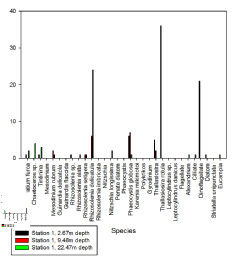
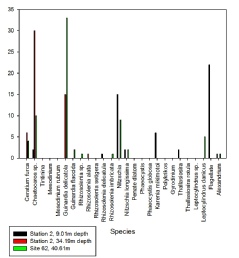
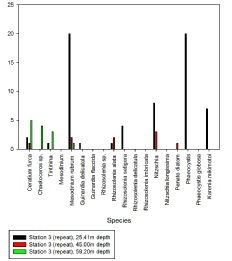
A) Abundance of Phytoplankton Species at Station 61
B) Abundance of Phytoplankton Species at Station 62
C) Abundance of Phytoplankton Species at Station 64
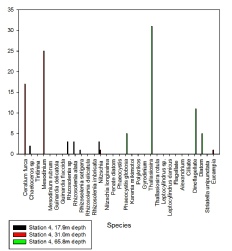
D) Abundance of Phytoplankton Species at Station 66
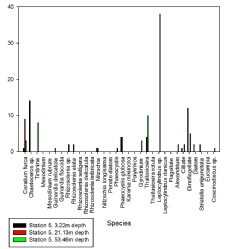
E) Abundance of Phytoplankton Species at Station 67
Figures 2 A-
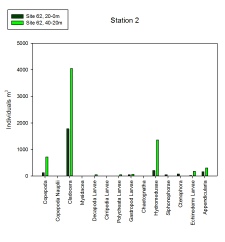
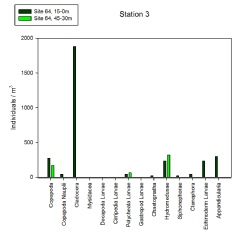
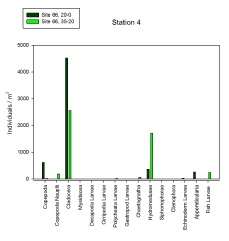
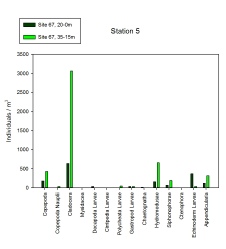
A) Station 62
B) Station 64
C) Station 66
D) Station 67
Figures 1 A-
Generally, the observed zooplankton community was completely dominated by cladocerans,
copepods and hydromedusae. This may have been a sampling bias due to strict sampling
of chlorophyll maximums and columns of thermally stratified water parcels. Deeper
water yielded a higher species diversity but lower species abundance compared to
surface samples throughout all stations, with the exception of station 64 (figure
1B). There was no significant difference in species diversity throughout the stations,
with a total range of 9-
There were no truly dominant species observed throughout any of the stations sampled,
although a definite trend of diatomic dominance was apparent. Station 61 (Figure
2A) exhibited high levels of the diatoms Rhizosolenia delicatula and Thallisoriora
rotula, as well as a high abundance of dinoflagellates, in surface layers. Most other
groups were not apparent at the station, or were present in very low numbers as depth
increased. Station 62 (Figure 2B) was populated exclusively with the diatoms Chaetoceros
spp and Guinardia delicatola at all depths, with the latter species becoming more
abundant at bottom layers. At station 64 (Figure 2C) the surface layers were sampled
only; the previously mentioned species were abundant in similar amounts, although
interestingly the bloom forming dinoflagellates Karenia mikimotoi and Gyrodinium
spp were present. Station 66 (Figure 2D) was dominated mainly by Thallisoriora and
the diatom Mesodinium rubrum at the two mid-
Disclaimer -